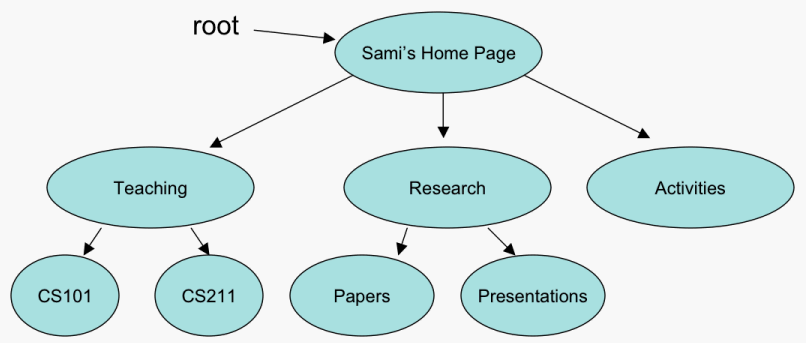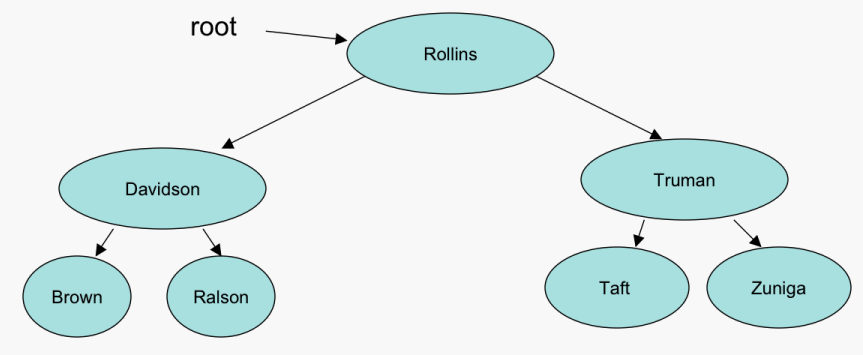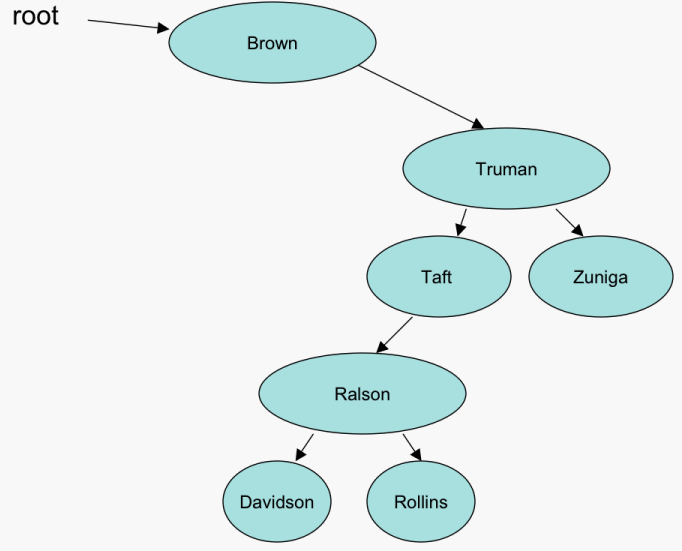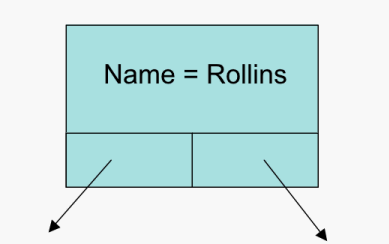
A tree is a non-linear data structure. Data access and storage in trees is faster than with linear data structures such as linked lists and trees are a more natural fit for many types of data. For example, the tree below represents my web site.

Ordered trees maintain a linear relationship between the nodes in the tree. A binary tree is a tree in which each node has at maximum two children. A binary search tree is an ordered binary tree. Below is an example of a binary search tree.

The following tree contains the same node and is also a binary search tree.

Pre and post order tree traversal algorithms visit every node in a given tree in a particular order. Both are recursive algorithms that begin with the root of the tree. A pre-order traversal visits a node and then recursively visits its left child and right child. A post-order traversal visits a node's left child, a node's right child, then the node itself. The algorithms are shown below:
preOrder(node) |
postOrder(node) |
if(node != null) {
|
if(node != null) {
|
The result of a pre-order traversal on BST1 above would yield the following result:
Rollins, Davidson, Brown, Ralson, Truman, Taft, Zuniga
The result of a post-order traversal on BST1 above would yield the following result:
Brown, Ralson, Davidson, Taft, Zuniga, Truman, Rollins
What would be the result of a pre/post order traversal on BST2?
An in-order traversal visits a node's left child, visits the node, then visits the node's right child. In a BST, this yields an ordered traversal of the elements stored in the tree.
Each node in a BST is similar to a linked list node. A BSTNode contains a data object, a reference to the left subtree, and a reference to the right subtree.

A BinarySeachTree class may contain the following methods:
find
The find method takes as input a target element and returns true if the element exists in the tree and false if it does not. The algorithm for find is as follows:
find(target, currentNode)
if currentNode != null
if target == currentNode.data
return true
if target < currentNode.data
return find(target, currentNode.left)
return find(target, currentNode.right)
insert
The insert method takes as input a new element and inserts it into the correct location in the tree. The algorithm for insert is as follows:
insert(data, currentNode)
if data < currentNode.data && currentNode.left == null
currentNode.left = new Node(data)
if data > currentNode.data && currentNode.right == null
currentNode.right = new Node(data)
if data < currentNode
insert(data, currentNode.left)
else
insert(data, currentNode.right)
Note that the algorithm above does not consider special cases.
remove
The remove method takes as input the element to be removed and removes it from the tree. Following is a sketch of the algorithm for the remove method:
remove(target) find node containing target if node has no children set parent's reference to node to null if node has only a right child replace node with its right child if node has only a left child replace node with its left child if node has two children replace node with predecessor (or sucecessor) recursively remove predecessor (or successor)
Date: 2007-11-05